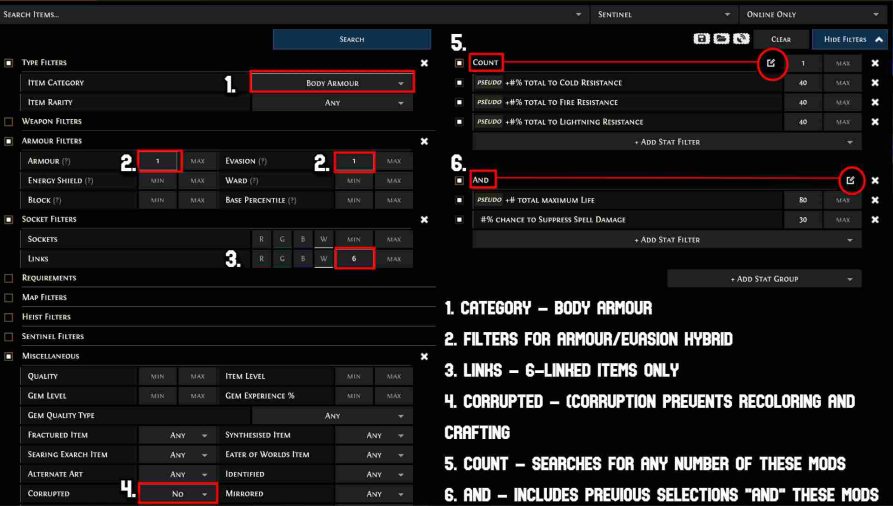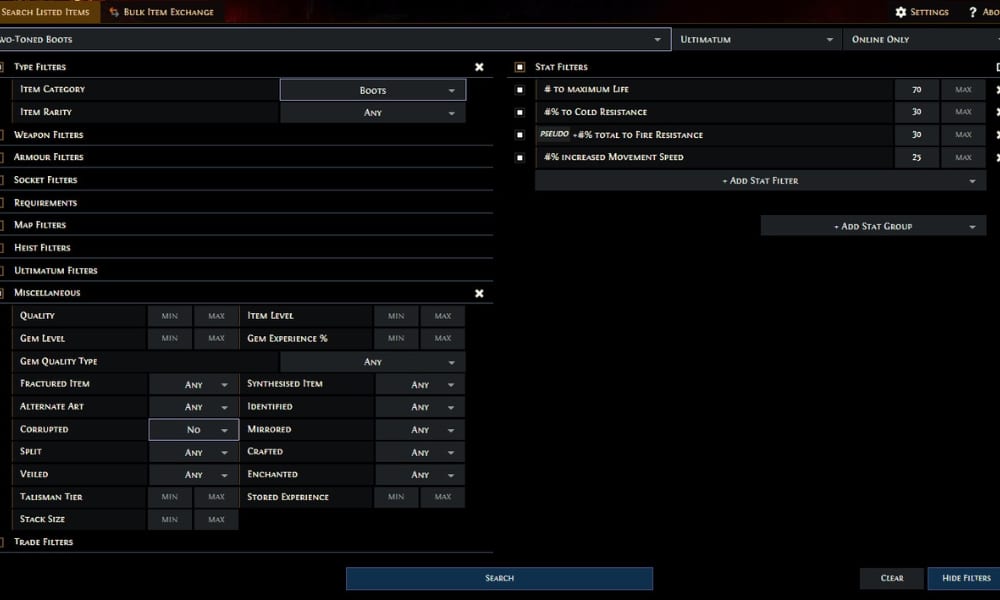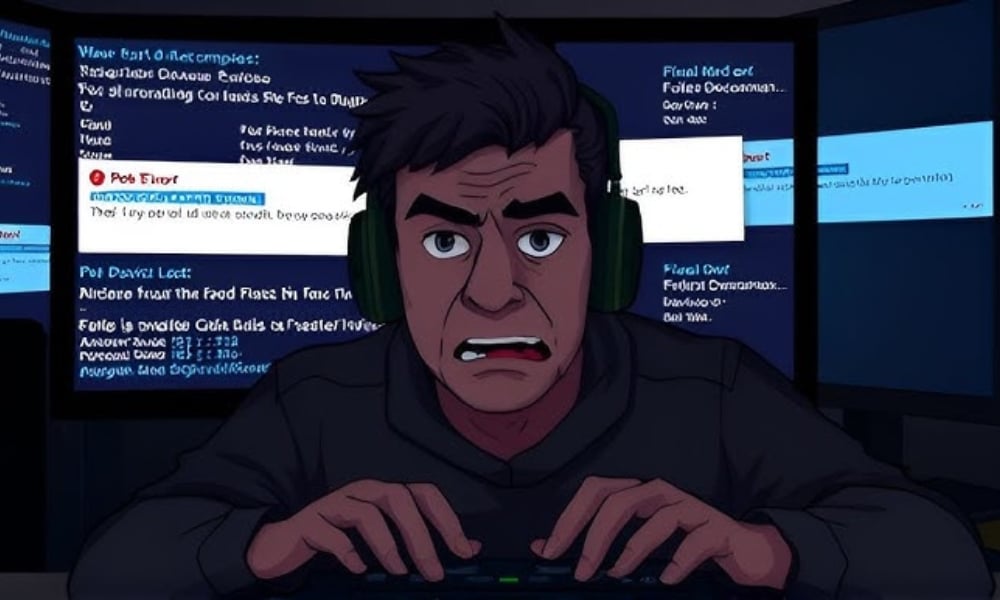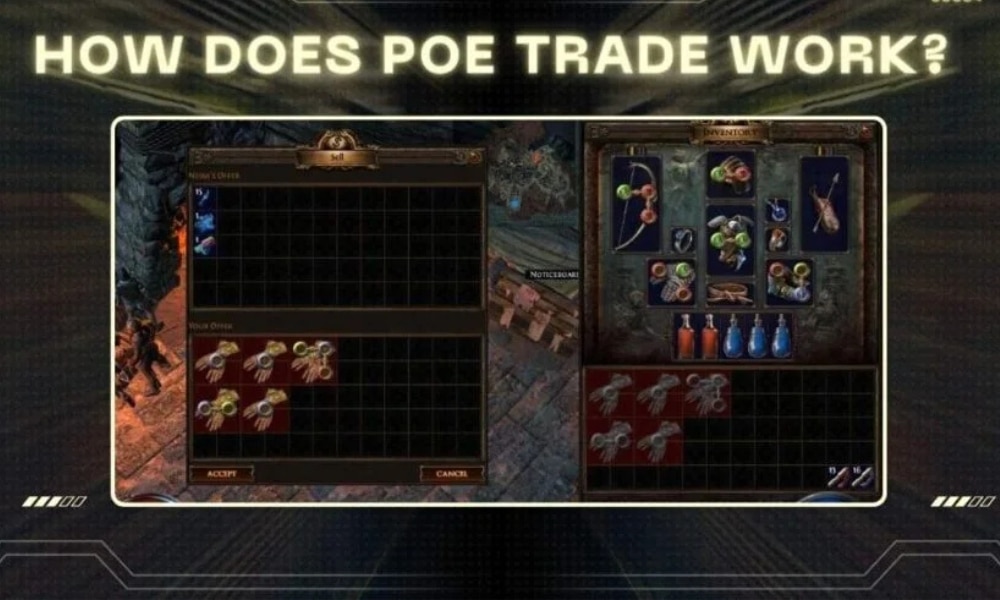Trading in Path of Exile (PoE) can be overwhelming for new players, especially without an official auction house. With a player-driven marketplace, PoE requires knowledge, strategy, and patience. Whether you’re acquiring powerful gear, rare items, or in-game currency, understanding how PoE Trade works is crucial. This guide will take you through the essentials of PoE Trade, providing you with tips for getting started, advanced strategies, common pitfalls, and essential insights for mastering the art of trading. To learn more about the upcoming features and improvements, check out the latest updates on Path of Exile 2.
How to Effectively Navigate PoE Trade: Key Strategies and Tips
1. Understanding PoE Trade
a). What is PoE Trade?
PoE Trade refers to the online marketplace where Path of Exile players buy and sell items using in-game currency, like Chaos Orbs and Exalted Orbs. Unlike MMORPGs with auction houses, PoE uses third-party websites (e.g., PoE.trade) and community platforms for trading.
b). How Does PoE Trade Work?
- Finding Items: Players search for items on PoE Trade websites.
- Contacting Sellers: Buyers contact sellers via in-game whispers.
- Completing the Trade: Trades are finalized in-game, typically in a hideout.
This system offers flexibility but can be challenging without proper knowledge of platforms.
c). Currency in PoE
- Chaos Orbs: Commonly used for regular transactions.
- Exalted Orbs: High-value currency for major trades.
- Orb of Alteration: Used for crafting and modifying items.
Each currency has a role in PoE’s economy, and knowing their values is key to success.
2. Getting Started with PoE Trade

a). Setting Up Your Trade Profile
To start trading, set up your profile on PoE.trade or the official PoE site. Link your account and configure preferences like pricing and trade methods (stash tabs or direct in-game meetings).
b). Searching Items to Buy
Use filters on PoE.trade or official site to search by item type, rarity, price, and league. Always double-check league and specific requirements (e.g., gem quality or specific item rolls).
c). Selling Items
To sell, use a Premium Stash Tab, which allows you to list items for other players to browse. Set competitive prices by referencing third-party websites.
3. Advanced Trading Strategies

a). Understanding Market Trends
Stay informed on market trends through trade websites and forums. Prices fluctuate based on league changes and player demand, so being aware of these shifts is crucial.
b). Flipping Items for Profit
Flipping involves buying undervalued items and reselling them for a profit. Look for items in high demand but priced below market value. Resell once the demand increases.
c). Bulk Trading
Bulk trading helps players sell or buy large quantities of items or currency quickly, often with better rates. This is useful for those wanting to avoid smaller trades.
d). Crafting and Selling Items
Crafting powerful items and selling them can be a profitable strategy. Understand crafting mechanics and focus on items in high demand, like high-tier weapons or armor.
4. Advanced Search Tips for PoE Trade

a). Performing Basic Searches:
Use search filters effectively, including item name, league, rarity, and mod requirements. For complex searches (e.g., specific affixes), use advanced filters like stat filters to refine results.
b). Narrowing Down Results
With numerous items listed, use filters to focus on the exact items you need (e.g., resistance rolls, specific mods, item levels). Narrow results by price, rarity, or specific mods for better targeting.
c). Running Live Searches
Enable live searches to get real-time notifications of matching items. This feature is especially helpful for rare or high-value items in the market.
d). Sorting Search Results
Sort search results by price, rarity, or stats to quickly find the best deals or highest-value items.
e). Currency Market in PoE
PoE Trade features a Currency Market, enabling bulk currency purchases or sales. Many players take advantage of this market, especially at the beginning of a new league when demand is high.
5. Avoiding Common Pitfalls in PoE Trade

a). Scams and Fraud
Scams are common, especially with high-end or rare items. To avoid them:
- Double-check item values.
- Use trusted trade platforms.
- Always deal with reputable traders.
b). Overpricing and Underpricing Items
Proper pricing is crucial for successful trades. Overpricing leads to unsold items, while underpricing results in lost profits. Use trade websites to check current market values and adjust accordingly.
c). Trading Etiquette
Good etiquette is key to building a solid reputation. Respond promptly, be polite, and complete trades fairly. A positive reputation encourages more successful trades.
Conclusion
Mastering PoE Trade is about understanding the marketplace, staying informed on market shifts, and using available tools to your advantage. By implementing the strategies discussed above, you can trade effectively and profitably. Patience, knowledge, and good communication are essential to becoming a successful trader in Path of Exile.
Key Takeaways:
- PoE Trade Basics: Learn the ins and outs of trading in a player-driven marketplace.
- Currency and Trading: Understand the different currencies and their roles in transactions.
- Getting Started: Set up your trade profile, find items, and list your own for sale.
- Advanced Strategies: Explore item flipping, market trends, and crafting for profit.
- Pitfalls to Avoid: Stay safe from scams and ensure fair pricing with good trading etiquette.
Engaging in trading within Path of Exile (PoE) can be both rewarding and complex. To assist players in navigating the trading system effectively, here are ten frequently asked questions (FAQs) accompanied by guidelines, user experiences, and source links to relevant forum discussions.
1. How do I initiate a trade in Path of Exile?
To trade in PoE, use the official trade website to search for items. Once you find a desired item, click the “Whisper” button to send a standardized message to the seller in-game. Wait for the seller to invite you to their party, then proceed to their hideout to complete the trade.
User Insight: “Use: https://www.pathofexile.com/trade/search/ and look up the item you want. Press the ‘direct Whisper’ button (game needs to be open). Wait for a response (the seller inviting you into a party).”
2. What should I do if I receive multiple messages immediately after listing an item?
If you receive multiple messages shortly after listing an item, it may be underpriced. Re-evaluate its value by comparing similar items on the trade site and adjust the price accordingly.
User Insight: “When selling an item, don’t sell it if 2+ people immediately message you. The item is underpriced. Do a better price comparison to see what your item stats are selling for and update the price.”
3. How can I improve my trading experience in PoE?
Trading higher-value items and buying in bulk can lead to more successful interactions. Additionally, sorting listings by time can help identify active sellers.
User Insight: “Some advice is to trade in higher value items. 3 to 10 chaos. It seems to increase the rate of replies, and I generally have a good trading experience.”
4. How do I list items for sale on the trade site?
To list items, you need a Premium Stash Tab. Set the tab to “Public” and price items individually or collectively. This will make them appear on the official trade site for other players to view and purchase.
User Insight: “You need to have a Premium Stash Tab which you can buy in the in-game Shop. Once you have the Premium Stash Tab in your stash, you have to right-click on the tab’s name on the top. You can give it a unique name, color, but the rest should look like this: You need to tick in the Public button and set it to ‘Each Item Individually Priced’.”
5. Is it possible to trade without a Premium Stash Tab?
Yes, you can create a shop thread in the trading section of the official PoE forums. Manually list your items by linking them in the thread, allowing interested buyers to contact you.
User Insight: “Setting a shop thread is very useful if you don’t have any premium stashes… even if you do have premium tabs, using the Trade Forums is a better way of selling high-end gear.”
6. How can I ensure fair pricing for my items?
Use trade websites like poe.ninja or tools like Awakened PoE Trade to compare your item’s stats and value. These tools reflect current league economics and help avoid underpricing or overpricing.
User Insight: “If your item sells in seconds, it was probably listed way too low. Use Awakened PoE Trade to check ranges and modifiers properly.”
7. What are common trading scams and how do I avoid them?
Always double-check the trade window before confirming. Common scams include last-second currency swaps (e.g., Exalted for Regal) and stack splits.
- Count the orbs manually.
- Check item name, links, and rolls.
- Never trade via chat or drop items on the ground.
User Insight: “I was rushing and didn’t notice they swapped the 3 Exalts for 3 Regals. That mistake cost me a full day’s grind.”
8. Can I trust all listings on PoE trade?
Not always. Some listings are outdated or part of price manipulation tactics known as “price fixing.” Sort by “online only” to avoid inactive sellers, and verify prices across multiple sources.
User Insight: “The top 5–10 cheapest listings are often fake or old. Scroll past them and you’ll find the real price.”
9. How can I handle multiple buyers at once efficiently?
When multiple players message for the same item, stay organized.
- Invite each one in order received.
- Use “/whois [account]” to check who is online.
- Politely tell others the item is pending.
- Decline trades clearly if the item is sold.
User Insight: “Always have a macro ready to paste: ‘Sorry, item sold.’ Saves tons of stress when your tab lights up with whispers.”
10. Are there tools to automate or streamline my trading experience?
Yes, several reliable tools help with trading in PoE:
- Awakened PoE Trade – for in-game price checking.
- PoE Overlay – UI enhancements and trading shortcuts.
- MercuryTrade – trade notification system with customizable responses.
User Insight: “Awakened PoE Trade is a lifesaver. One hotkey, boom — pricing, demand, even alternatives, all right there.”


